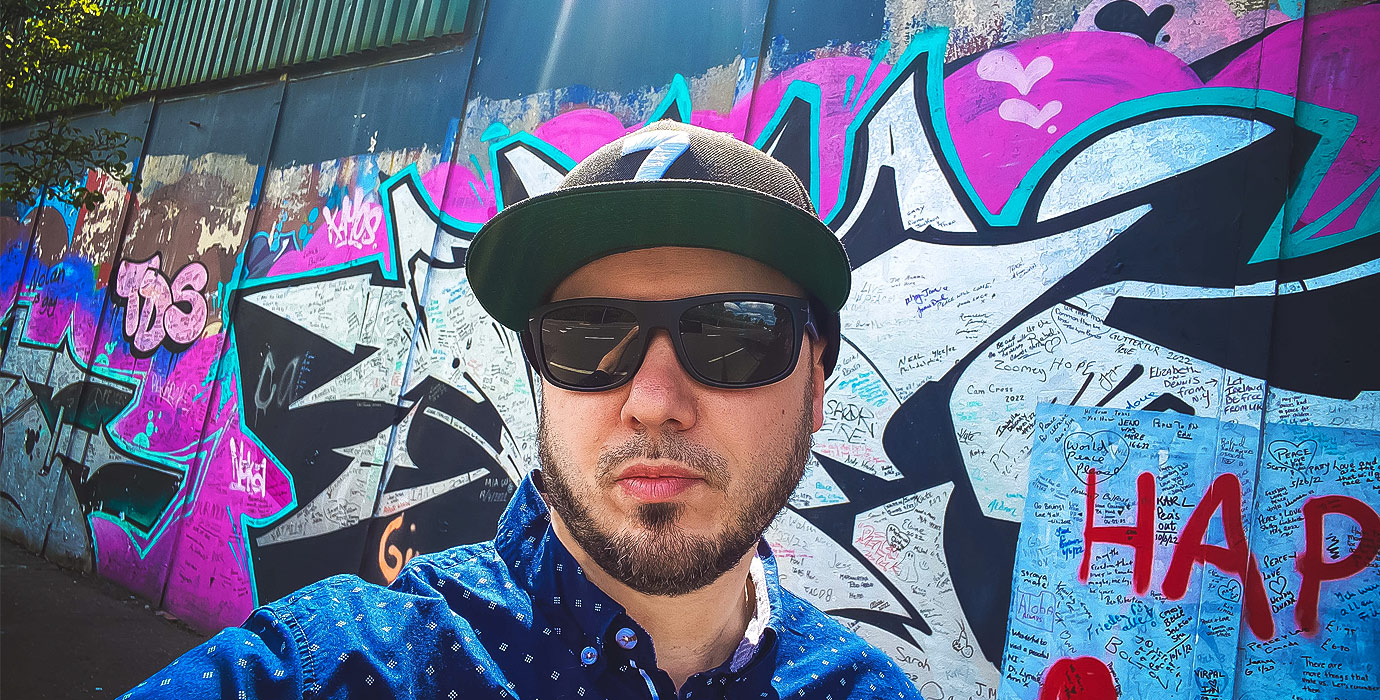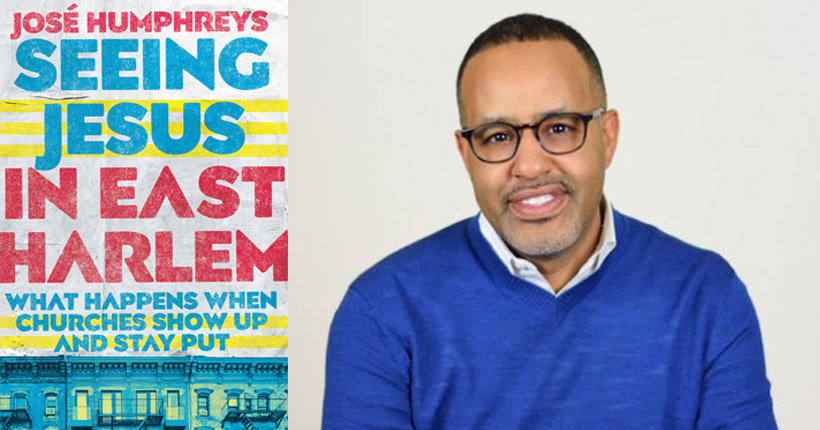Vision is essential for any ministry, but perhaps especially for church planting. Add to the myriad entrepreneurial needs of a startup the spiritual care and formation needed to lead a congregation. Then, if a spiritual startup isn’t a tall enough task (it is!), add to that the urban context and front-load ethnic and cultural diversity. This makes for the kind of ministry that not only requires immense competence and experience, but also a profound and compelling vision.
José Humpheys is just such a visionary leader. He’s pioneered a ministry in East Harlem that, while it may not make the front pages of Church Growth magazine, is the stuff of legend in the urban church planting world. Not only has he managed to lead Metro Hope Covenant Church for over a decade—which is a miracle in and of itself—but he’s also managed to create a culture amongst his church that is contemplative, liturgical, Spirit-filled, justice-oriented, and Jesus-centered. For urban, multiethnic church planters such as myself: that’s the dream! Which is why José has been a mentor and friend for many years. He’s inspired me as a minister long before he authored this book, but I’m so glad many others will now have the opportunity to learn from him.
While Metro Hope might be the dream for folks like me, leading it hasn’t been without its challenges. José is very transparent about the messiness of such an ambitious endeavor. Nevertheless, Seeing Jesus in East Harlem is about a new vision. Namely, it’s about the lens of shalom theology. Shalom—God’s vision of wholeness, justice, peace and right-relatedness throughout creation—is embedded within every aspect of José’s ministry philosophy and every page of this book. It is the lens through which José teaches readers to view their calling, their ministries, their purpose in life.
Seeing Jesus isn’t a “how to” manual—it’s much more than that. It’s a robust theological vision. José doesn’t dumb anything down. Prepare to be challenged. Prepare to learn. Prepare to be inspired.
“Shalom provides a word picture that jars our theological imaginations. Perhaps we have thought of shalom as peace and have associated it with serenity or the absence of conflict. But shalom is active. It embraces a complex world where we witness ruptures and traumas in both the person and public spheres of life. The seekers of shalom, the children of God, will continually strive toward God’s alternative vision of a world turned upside down.” (95)
In three movements, José guides readers through a beautifully-crafted, theologically-rich symphony of wisdom gleaned from his own ministry journey, his family, and the life of Metro Hope. The first movement is “Show Up.” In these chapters, José begins by introducing readers to his ministry context and his own social location. I adored the way José invited us into this background, his neighborhood, his home church. For me it was reminiscent of stories I’ve read by Junot Diaz. In these chapters he sets the stage for his full-bodied theology of shalom by reframing the way we think about sin and evil in the world, much like Cornelius Plantinga’s Not the Way It’s Supposed to Be. José thinks of sin and evil in the world as the breaches, the ruptures, the breakdown of shalom. This lays the foundation for a much more holistic ministry philosophy. There will be no quick fixes, no silver bullets, only faithful presence and thoughtful yet prophetic witness. Drawing on insights from such luminaries as (my seminary professor) Eldin Villafañe and Orlando Costas, not to mention Lisa Sharon Harper (author of The Very Good Gospel) who was once part of the Metro Hope congregation, José calls for and illustrates a ministry practice centered in the restoration of the imago Dei (image of God) through the incarnation of Jesus. And José pulls no punches; he confronts head-on the way Western/American culture distorts our vision through white supremacy.
Our vision of ourselves informs how we “show up” as members of the body of Christ, and how we show up informs how we dwell in our neighborhoods, our work places, our families, and everywhere else. That is why movement two is about “Staying Put.” José shares about Metro Hope’s journey and on-going commitment to being a presence of shalom in East Harlem. One of the examples that has stuck with me since reading it is that of Hope House, Metro’s adventure into “intentional community.” Reading about the church’s courage and hospitality was inspiring. But it isn’t a naive vision. José is very transparent about the challenges of such a ministry and even some personal missteps he made along the way. For ministers sensing God’s call in this direction, this will be of practical help.
Staying Put is also about rootedness. José invites readers to embrace embody practices of contemplation, resistance, and community. Seeing Jesus might be one of the best books I’ve read when it comes to addressing the immensely complex subject of gentrification. José’s pastoral and theological analyses are somehow both prophetic and realistic. I love that he is able to narrate and wrestle with his own enmeshment with gentrification. Solutions aren’t as clear cut as we would like them to be.
To dwell in our neighborhoods as ambassadors of shalom, and to embody faithful, formative practices, we need renewed vision—a new way of seeing. That’s why the third movement is simply called “See.” José urges readers to put on the shalom ministry lens and take a second look at those around us—seeing with the eyes of Jesus. This renewed vision empowers us to develop embodied practices that better form us into the kinds of disciples who show up and stay put. I loved José’s emphasis on lament and communion. These have also been vital, formative practices in my own life and ministry.
There are so many aspects of this book which deserve to be praised, but I’ll round out this review with just three.
First is José’s integration of wisdom from multiple fields. He brings to his philosophy of ministry deep insights into trauma and grief borne from his education and service as a social worker, but also borne from his family’s own battle with terminal illness. This book is far more holistic than most books on urban ministry. José never divorces the spiritual work of ministry from the material work of caring for whole persons.
Second, Seeing Jesus is a master class in ecclesiology. José doesn’t fall in line with today’s hippest bandwagon of abandoning the local church. He goes in the exact opposite direction! This book is a love letter to the church—a hopeful and faithful call to embrace the awkward, challenging, sometimes painful, art of being a diverse community. He also doesn’t mince words about the church being an alternative community, a countercultural movement, contrasting with the broader society in its norms and values. This missional, nearly Anabaptist, ecclesiology was one of the book’s most consistent and encouraging themes.
Finally, this book pulls no punches whatsoever when it comes to confronting the powers that be. José utilizes a liberationist critique of empire masterfully, calling American Christians to allegiance to Christ alone and renunciation of nationalistic idolatry. He calls the church to faithful, prophetic witness in the midst of “Babylon.” This is not only a critical part of the overall shalom ministry lens he’s teaching, it’s also incredibly timely for American Christians post-2016.
I can’t recommend Seeing Jesus highly enough. I think it’s the most authentic, quotable, and relevant book on urban, missional, incarnational ecclesiology available today.


